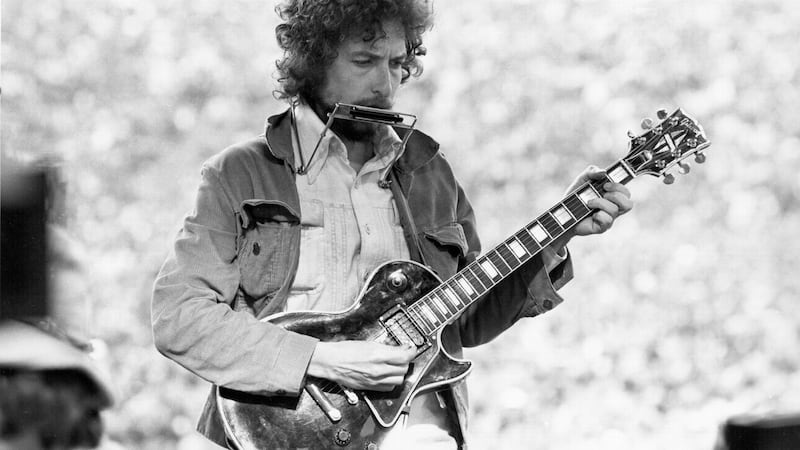In September 1974, as Bob Dylan's nine-year marriage to Sara Lownds fell apart, he entered a New York studio and, playing mostly solo, laid bare, in his own thrilling oblique fashion, the wounds of the heart and much else besides (ie the rollicking tale of Lily, Rosemary and the Jack of Hearts). The album was a revelation to insiders, but then he binned it. It was said his brother told him it was too personal. Whatever the reason, Dylan went into a Minneapolis studio in December and rerecorded many of the songs with a band.
Blood on the Tracks, 43 years years on, remains one of his landmark achievements. It was also the album that reignited a career burdened by a glorious past. Critics were increasingly whispering that maybe Dylan was past it. Certainly his output throughout the early 1970s was relatively lightweight.
British writer Ian Bell, in his incisive Once Upon A Time: the Lives of Bob Dylan, argues that with Blood on the Tracks Dylan redeemed and renewed himself. "Once again, he extended the range of popular music. One again, it was possible to talk of his writing in terms of poetry…"
Some tracks, notably the self-serving Idiot Wind, may have lost traction over time, but songs such as If You See Her Say Hello, You're A Big Girl Now, Simple Twist of Fate and You're Gonna Make Me Lonesome When You Go are as fresh and intriguing today as when first heard all those years ago. It really is one of the great rock albums.
That’s the backdrop to this eagerly awaited latest volume of the Bootleg Series. There are two offerings – a “limited edition” six-cd boxset and a single cd/double vinyl album. Both have their strengths. The boxset provides a real insight into the making of the album, the way Dylan develops not just the arrangements, moving from stark guitar and harmonica to a full band, but how he develops his voice, tweaking his tone, his phrasing, his timing, cloaking his vulnerability in the camouflage of a bigger sound.
There are only 10 tracks on the original album. The boxset features 68 tracks including all the Minneapolis recordings used on the original album. For instance, there are 10 different takes of Tangled Up In Blue. Now that may be one or three more than most people think they can handle, but the oddest thing is that interest rarely flags – the process itself is fascinating. Maybe the fact that I know and love the songs so well allows me to savour these behind-the-curtain reveals.
It is interesting that the single cd/double vinyl version features all early takes from the September New York sessions. There are 11 tracks, the 10 from the original plus the bitter Up To Me, which Dylan dropped perhaps because it sounded too similar to Shelter From the Storm.

Although none of the advance publicity states it, this album could possibly be Blood on the Tracks mark one. Certainly, in the stripped-back settings of mostly guitar and harmonica, the Dylan we hear is more personal and vulnerable, and one is tempted to add, more transparent, than at any time before or since.
All of this would be mere voyeurism without Dylan’s ability as an artist to transform personal travails into universal truths. That is why these songs endure, why they have a life and a meaning beyond the bard’s. And that is why these stages of their production are so compelling.
















